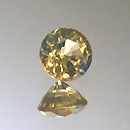|
|
||||||||||||||||
|
||||||||||||||||
|
||||||
|
|
|
|
Burbankite
|
|
| | |
| Discovered in 1955; IMA status: Valid (pre-IMA; Grandfathered) | ||
|
| ||
|
Chemistry |
|
|
| |
|
(Na,Ca)3(Sr,Ba,Ce)3(CO3)5 | |
|
|
Sodium Calcium Strontium Barium Cerium Carbonate |
|
Molecular Weight: |
706.03 gm |
|
Composition: |
Barium |
17.51 % |
Ba |
19.55 % |
BaO |
|
|
Sodium |
7.16 % |
Na |
9.66 % |
Na2O |
|
|
Strontium |
22.34 % |
Sr |
26.42 % |
SrO |
|
|
Calcium |
4.54 % |
Ca |
6.35 % |
CaO |
|
|
Ceruim |
5.95 % |
Ce |
6.97 % |
Ce2O3 |
|
|
Carbon |
8.51 % |
C |
31.17 % |
CO2 |
|
|
Oxygen |
33.99 % |
O |
|
|
|
|
|
100.00 % |
|
100.00 % |
= TOTAL OXIDE |
|
|
|
||||
|
Classification |
|
|
| |
|
Carbonates | |
|
5/B.05-100 | |
|
|
5 : CARBONATES (NITRATES)
|
|
Related to: |
Burbankite Group. |
|
Members of Group: |
Burbankite Group: Burbankite, Khanneshite, Calcioburbankite, Sanromanite |
|
Varieties: |
Strontioburbankite |
|
Synonyms: |
None |
|
|
|
|
Crystal Data |
|
|
|
|
|
Long dihexagonal prismatic crystals with shallow pyramidal terminations, striated parallel [001], may be in fibrous spherical aggregates; anhedral granular, to 5 cm. |
|
|
None |
|
|
|
|
|
Physical Properties |
|
|
|
|
|
Distinct to Imperfect on {1010} |
|
|
Irregular/Uneven |
|
|
Brittle |
|
|
3.5 - 4.0 |
|
|
3.50 - 3.58 (g/cm3) |
|
|
Fluorescent |
|
|
Mild; GRapi = 5,871.73 (Gamma Ray American Petroleum Institute Units) |
|
|
Other: | |
|
|
|
|
Optical Properties |
|
|
|
|
|
Colorless, Grayish Yellow, pale Yellow, Orange, Pink, pale Greenish |
|
|
Transparent to Translucent |
|
|
Vitreous |
|
|
1.616 - 1.623 Uniaxial ( - ) |
|
|
0.0120 |
|
|
0.013 |
|
|
e = colorless, w = colorless |
|
|
|
|
|
Occurances |
|
|
|
|
|
Geological Setting: |
Typically an abundant accessory mineral in carbonatites; in an intrusive alkalic gabbro-syenite complex; may be authigenic. |
|
Common Associations: |
Ancylite, Calkinsite, Lanthanite, Calcite, Biotite, Barite (Big Sandy Creek, Montana, USA); Ancylite, Carbocernaite, Calcite (Mont Saint-Hilaire, Canada). |
|
Common Impurities: |
None |
|
Type Locality: |
Bearpaw Mts, Hill County, Montana, USA |
|
Year Discovered: |
1955 |
|
View mineral photos: | |
|
|
|
|
More Information |
|
|
|
|
|
| |
|
|
|
|
The
only source of gem quality crystals is the Poudrette quarry, Mont Saint-Hilaire, Rouville County, Québec, Canada.
Other non-gem sources are in
the USA, from vermiculite prospects at the head of Big
Sandy Creek, Rocky Boy’s Indian Reservation, about 40
km east of Box Elder, Hill County, Montana; in the Green
River Formation, Utah and Wyoming. In Canada, at Mont
Saint-Hilaire, and in the Miron quarry, Montreal, Quebec;
at Chipman Lake, Ontario. In the Qaqarssuk carbonatite,
near Sukkertoppen, and the Grønnedal-Ika complex, Greenland.
Found in Brazil, at Po¸cos de Caldas, Minas Gerais.
In Russia, on the Kola Peninsula, from the Vuoriyarvi
carbonatite and Khibiny massifs, large crystals; at
the Ozernyi carbonatite, southeastern Sakha; Arbarastakh
carbonatite, Aldan; and the Nizhnesayanskii carbonatite,
east Sayan; and in the Vishnevogorsk complex, Vishnevy-Ilmen
Mountains, Southern Ural Mountains. From the Tajno massif
carbonatites, 70 km north of Bialystok, Poland. In the
Zeerust district, Transvaal, South Africa. |
|
|
We
have not photographed our Burbankite gems yet. Please
check back soon! |
